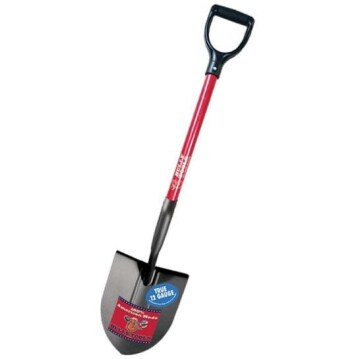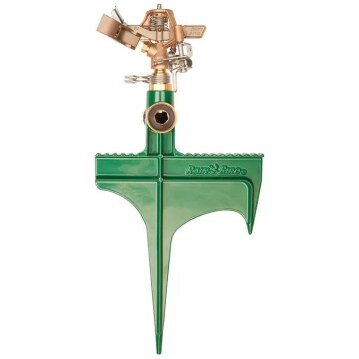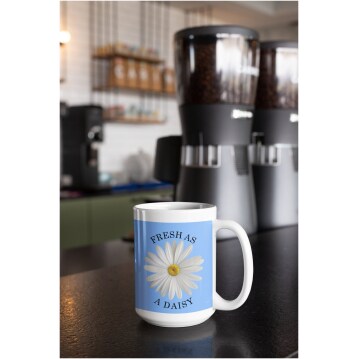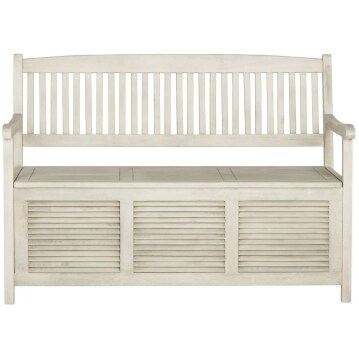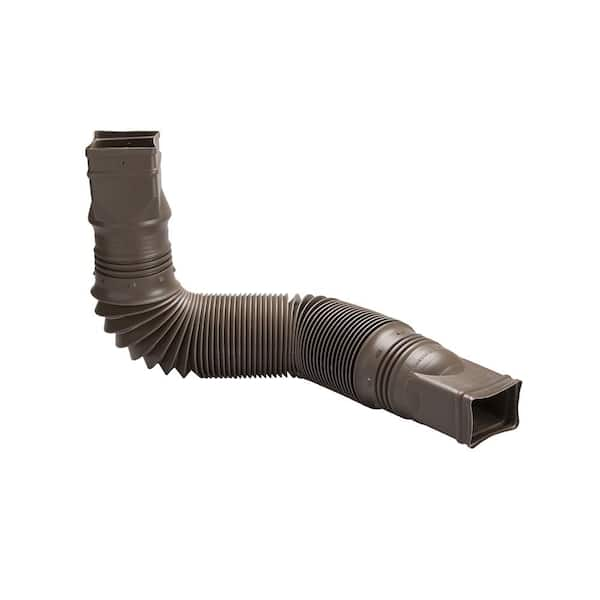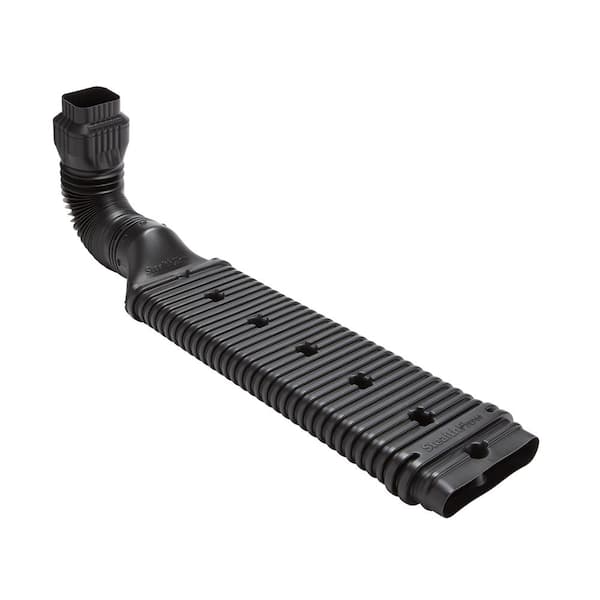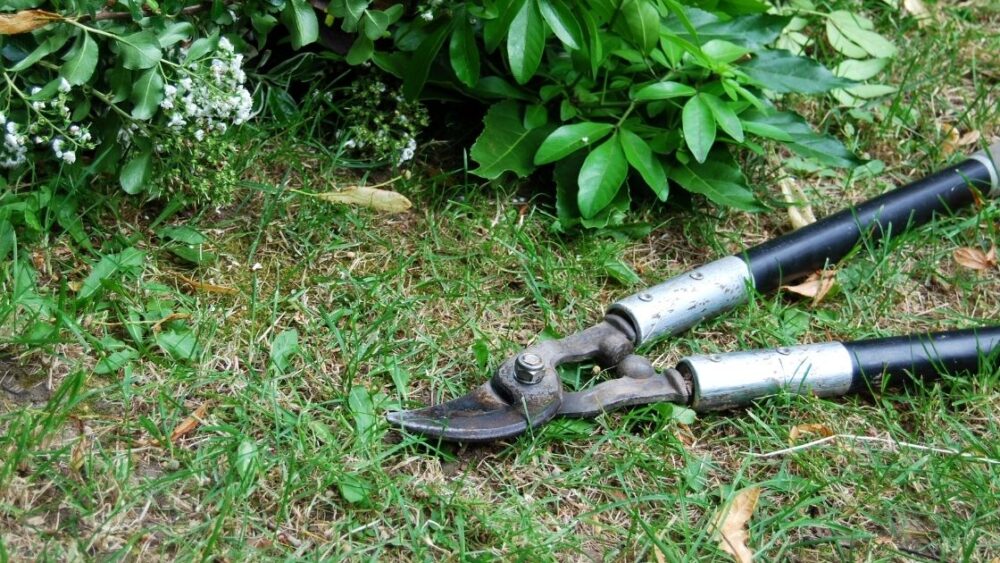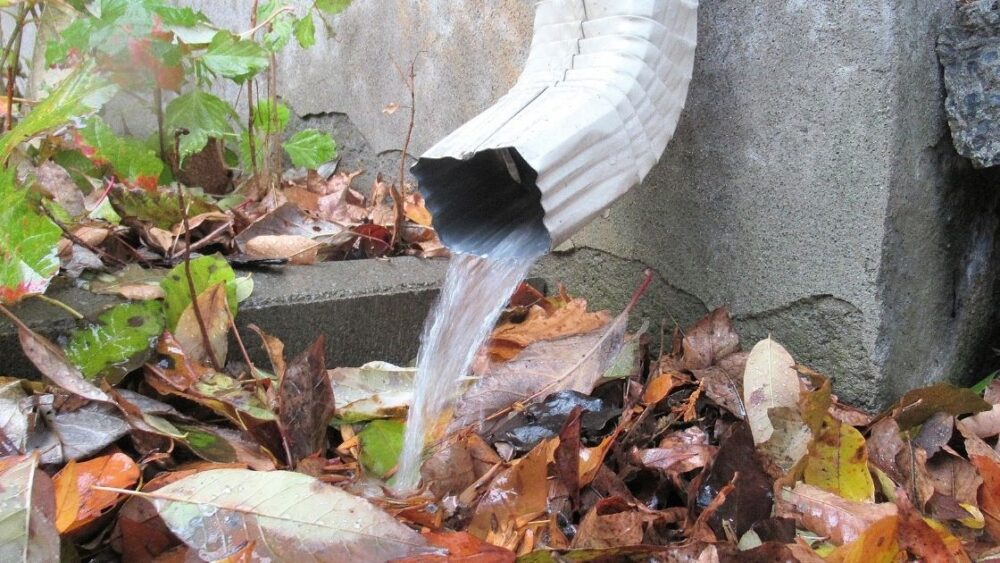
Downspout drain extenders and splash blocks both serve a similar purpose – they divert the water coming out of the downspout several feet away from the foundation of the building. This can prevent various types of water damage to the foundation slab, as well as other issues we’ll discuss in a minute. Splash blocks and downspout extenders also make the runoff water fall more ‘gently’ onto the ground, preventing splashing. This excessive splashing can be a problem during heavy rains, when the water output of the downspout is high. Not only can the heavy stream of pouring water lead to slowly-accumulating damage, but the splashing can create a mess that has to be dealt with after every heavy rain.
Why are Drain Extenders or Splash Blocks Necessary?
The water damage phenomena which occur when the downspout is in close proximity to the foundation of the building are many and are complex from a scientific point of view:
- The high ‘wetness’ of the ground in close proximity to the concrete foundation leads to an acceleration of various chemical reactions which can erode the concrete. Some of those reactions are caused by soil bacteria/fungi. Others are due to the accumulation of carbonic acid. The end result is damage to the foundation, mold development and unpleasant smells in the basement.
- The high amount of water can also cause various problems associated with hydrostatic pressure, the end result of which is the development of cracks in the concrete. Close to the foundation, the soil is much more porous and consists mostly of backfill, allowing runoff water to flow and accumulate freely in direct proximity to the foundation. This can lead to humidity issues in basements or mold formation on the inside of the wall.
- Apart from those potentially serious, long-term consequences, splashing water can simply create an unpleasant mess and directly erode whatever material it falls onto. The sound of the splashing or dripping water can also be annoying.
Drain Extenders – What Are They and How Do They Work?
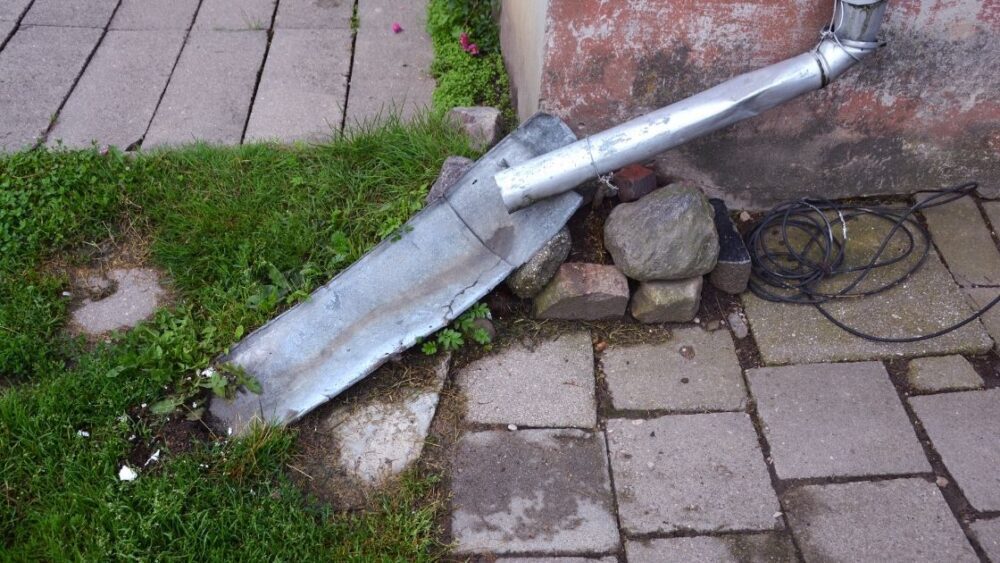
Drain extenders are simple tubes, which connect to the downspout and redirect the falling water away from the foundation of the house. They also deflect the velocity of the falling water sideways, so that it doesn’t cause any damage and makes less dripping noise. The downspout water is usually redirected to an area with high drainage, which can be created by using a layer of rocks.
Browse our Affiliate Products
Simply redirecting the water farther away from the foundation of the house is often good enough, and a separate drainage area is not always necessary. Drain extenders give you the option to redirect the water to a creek bed or even to collect it in a container, after which it can be used for watering your garden. Check out these water collectors that Amazon has.
Types of Drain Extenders
Drain extenders always consist of a pipe that extends the path of the water from the downspout to the ground. Drain extenders can be made out of different materials, including plastic, vinyl or polymer. Long drain extenders can be buried into the ground, completely eliminating any splashing.
Various, flattened designs exist, which have very low height and can be covered with mulch or rocks, achieving somewhat of a hybrid design between regular downspouts and underground drainage.
- Roll up extenders – one of the cheapest and most practical solution for redirecting roof runoff water. A roll-up extender is a flat tube that comes rolled up like a garbage bag roll. The pressure of the falling water in the downspout automatically keeps the tube inflated and the water easily travels through it. Those extenders can be very long and have almost no height – they are usually not damaged by accidentally stepping on them. They can be easily hidden, especially if a suitable color that blends with the lawn or mulch is chosen.
- Corrugated/flexible extenders – an extremely common extender that is very durable and cheap. Flexible extenders are also very practical and can be easily buried int he ground without obstructing the water flow. Perforated flexible extender ends also exist, which are designed to be buried for seamless, underground drainage.
- Downspout hinge – Those types of extenders are a more permanent solution, but require the most effort to install properly. The hinge allows you to connect a long, non-flexible extender that connects to the downspout by the use of a flexible joint. This allows you to lift the extender upwards when doing yardwork.
For more information on a different setup and downspouts, checkout this article. Rain Chains vs. Downspouts: Which is Right For Me?
Pros and Cons of Drain Extenders
Drain extenders don’t have any particular disadvantages when compared to other methods of redirecting roof runoff water. Usually, drain extenders are several feet in length, but can be as short as 1 foot. Unlike splash blocks, extenders often require some pre-planning to choose – flexible tube designs usually have to be matched with the shape of your downspout.
Splash Blocks – What Are They How Do They Work?
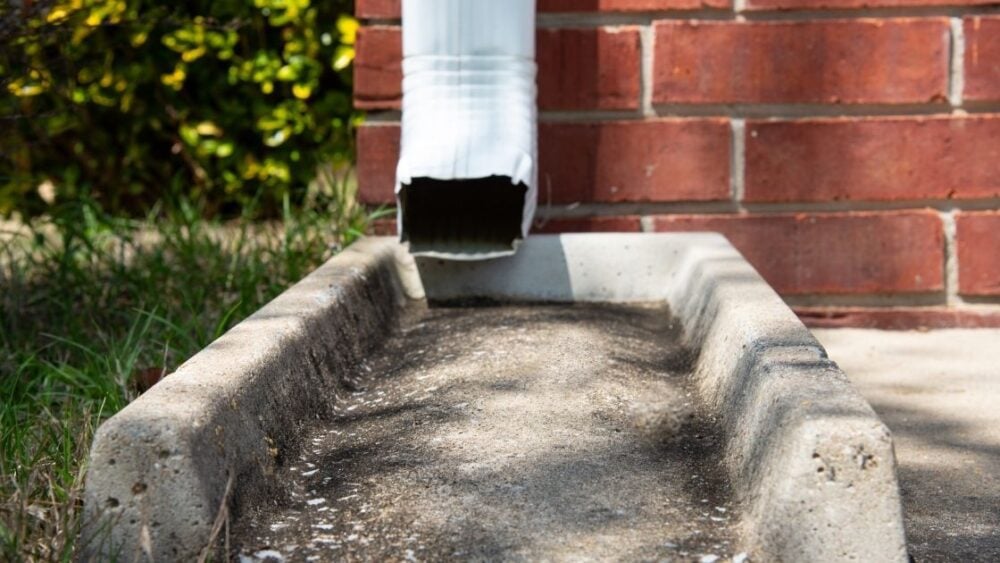
Splash blocks are very similar to drain extenders, but they are even easier to install. They are simple channels, which the runoff water flows through and are made of concrete or plastic. Unlike drain extenders, they don’t have to be connected to the downspout and are simply positioned underneath it.
Types of Splash Blocks
- Regular, plastic splash blocks – Those are the simplest, cheapest and most lightweight splash blocks. They are long trays that guide the runoff water. Most are very short, having a length of around 24 inches. This is usually enough to prevent foundation damage. Many plastic splash blocks feature long ground screws, which keep them in place even in extreme weather.
- Ornamental splash blocks – those are usually very short and are a compromise between practicality and aesthetics. Some measure less than a foot in length and just prevent the runoff water from flowing in the immediate vicinity of the foundation. Countless interesting designs exist, often featuring animals ‘playing’ with the runoff water as if it’s a waterfall.
Pros and Cons of Splash Blocks
The only significant disadvantage of splash blocks, when compared to drain extenders is their lack of flexibility They are usually straight, which somewhat limits the possible locations the water can be redirected to.
Splash blocks are also bulkier and can be less visually-pleasing than drain extenders. Compared to drain extenders, splash blocks are usually shorter in length. In some situations, splash blocks may require slope correction, so that water doesn’t flow back or overflow from the edges.
A big advantage of splash blocks is that any splash block can be used for any downspout, regardless of the shape and end profile. Lightweight splash blocks that are positioned too far away from the end of the downspout can create a lot of noise as the water drips onto them.
Final Thoughts
Diverting roof runoff water away from the foundation of your house is a good practice – it prevents various types of water damage and basement mold issues. Splash blocks and downspout extenders are extremely similar to each other, but splash blocks are often easier to install – most don’t require physical joining with the end of the downspout. Making the choice between extenders and splash blocks mainly comes down to visual preference.
